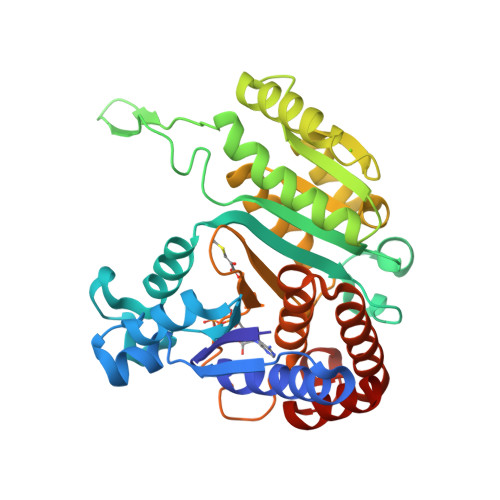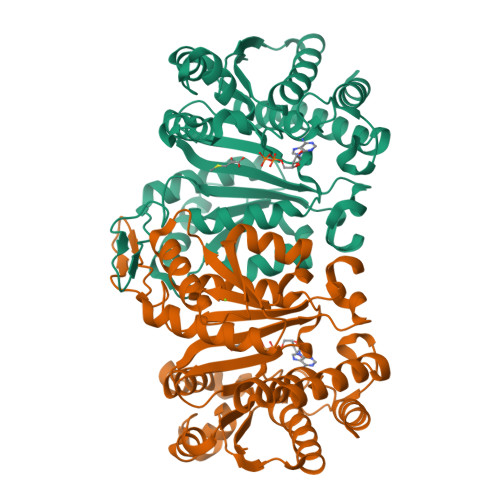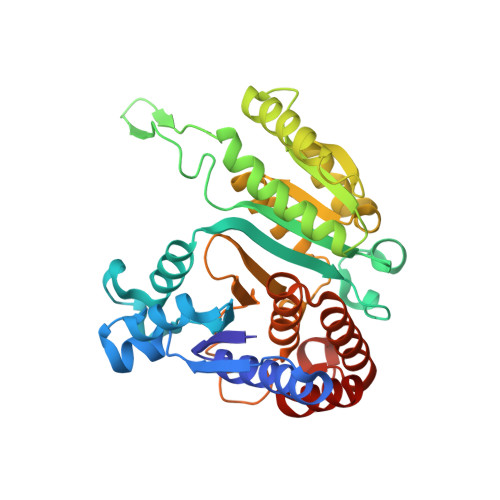Crystal structure of 3-isopropylmalate dehydrogenase in complex with NAD(+) and a designed inhibitor
Nango, E., Yamamoto, T., Kumasaka, T., Eguchi, T.(2009) Bioorg Med Chem 17: 7789-7794
- PubMed: 19833522
- DOI: https://doi.org/10.1016/j.bmc.2009.09.025
- Primary Citation of Related Structures:
2ZTW - PubMed Abstract:
Isopropylmalate dehydrogenase (IPMDH) is the third enzyme specific to leucine biosynthesis in microorganisms and plants, and catalyzes the oxidative decarboxylation of (2R,3S)-3-isopropylmalate to alpha-ketoisocaproate using NAD(+) as an oxidizing agent. In this study, a thia-analogue of the substrate was designed and synthesized as an inhibitor for IPMDH. The analogue showed strong competitive inhibitory activity with K(i)=62nM toward IPMDH derived from Thermus thermophilus. Moreover, the crystal structure of T. thermophilus IPMDH in a ternary complex with NAD(+) and the inhibitor has been determined at 2.8A resolution. The inhibitor exists as a decarboxylated product with an enol/enolate form in the active site. The product interacts with Arg 94, Asn 102, Ser 259, Glu 270, and a water molecule hydrogen-bonding with Arg 132. All interactions between the product and the enzyme were observed in the position associated with keto-enol tautomerization. This result implies that the tautomerization step of the thia-analogue during the IPMDH reaction is involved in the inhibition.
Organizational Affiliation:
Department of Chemistry, Tokyo Institute of Technology, O-okayama, Meguro-ku, Tokyo 152-8551, Japan.



















